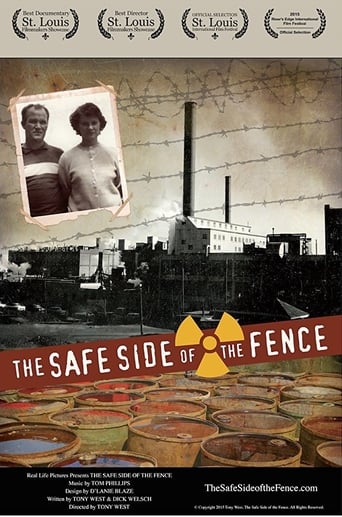The Safe Side of the Fence
World War II's Manhattan Project required the refinement of massive amounts of uranium, and St. Louis-based Mallinckrodt Chemical Works took on the job. As a result, the chemical company's employees would become some of the most contaminated nuclear workers in history. This documentary explores the legacy that St. Louis is still coping with, from workers who became ill - to the challenges of dealing with the fallout of creating some of the world's first nuclear waste. The story is not unique to St. Louis, as more than 300 facilities across America would become part of the race to build the bomb, and be forced to deal with many of the same issues. A detailed look into what some of the men and women went through inside these plants, and how decisions made in the past, effect us all today. World War II's Manhattan Project required the refinement of massive amounts of uranium, and St. Louis-based Mallinckrodt Chemical Works took on the job. As a result, the chemical company's employees would become some of the most contaminated nuclear workers in history. This documentary explores the legacy that St. Louis is still coping with, from workers who became ill - to the challenges of dealing with the fallout of creating some of the world's first nuclear waste. The story is not unique to St. Louis, as more than 300 facilities across America would become part of the race to build the bomb, and be forced to deal with many of the same issues. A detailed look into what some of the men and women went through inside these plants, and how decisions made in the past, effect us all today. World War II's Manhattan Project required the refinement of massive amounts of uranium, and St. Louis-based Mallinckrodt Chemical Works took on the job. As a result, the chemical company's employees would become some of the most contaminated nuclear workers in history. This documentary explores the legacy that St. Louis is still coping with, from workers who became ill - to the challenges of dealing with the fallout of creating some of the world's first nuclear waste. The story is not unique to St. Louis, as more than 300 facilities across America would become part of the race to build the bomb, and be forced to deal with many of the same issues. A detailed look into what some of the men and women went through inside these plants, and how decisions made in the past, effect us all today. World War II's Manhattan Project required the refinement of massive amounts of uranium, and St. Louis-based Mallinckrodt Chemical Works took on the job. As a result, the chemical company's employees would become some of the most contaminated nuclear workers in history. This documentary explores the legacy that St. Louis is still coping with, from workers who became ill - to the challenges of dealing with the fallout of creating some of the world's first nuclear waste. The story is not unique to St. Louis, as more than 300 facilities across America would become part of the race to build the bomb, and be forced to deal with many of the same issues. A detailed look into what some of the men and women went through inside these plants, and how decisions made in the past, effect us all today.



 AD
AD

